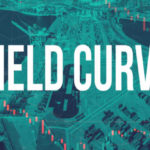
By roger ashford @ Shutterstock.com
Originally posted July 7, 2015.
Shane Ellison, M.Sc., “The Peoples Chemist,” explains in an email (copied below) the difference between relative and absolute risk. As Shane writes, “Statistical contortionism is the art of converting healthy people into patients by using numbers to exaggerate drug benefits. Lipitor is a prime example.”
The message is simple. Never pay any attention to relative risk. You know, the sort of wording that tells you to lower your risk of heart attack by X percent. Instead you want to know the absolute number. You want to know from a specific study the number of patients that benefited as a percent of the total number in any test.
In Shane’s example the worthless and promoted relative number is 36%, while the vital absolute number is a tiny 1%.
When you are considering the value of any specific drug and drug study, ask your doctor to provide you with the number needed to treat (NNT). This will allow you to find out exactly how many patients must be given a specific drug to prevent a specific negative event (heart attack, etc.). By example, the NNT involved in prescribing aspirin to get rid of a headache is 1, meaning that every person given an aspirin to moderate a headache can expect to benefit. I see statin drug studies where the NNT is 100 or even 200 and higher. Here is a post I put up previously on the arithmetic of statin drugs. My original reference source was Business Week.
Shane writes:
Statistical contortionism is the art of converting healthy people into patients by using numbers to exaggerate drug benefits. Lipitor is a prime example. Drug companies and physicians use “relative risk reduction” while ignoring the “absolute risk reduction” in order to promote Lipitor use to a wider audience. This practice of statistical contortionism is akin to hiding evidence because it exaggerates benefits. See for yourself.
Lipitor promoters insist that those with so-called high cholesterol can achieve a 36% “relative risk reduction” in heart attack by using the cholesterol-lowering drug. The contortionists ignore that the same raw data can yield a more revealing “absolute risk reduction” of a paltry 1%. Using absolute risk reduction is more accurate because it compares the actual difference between the treated and untreated groups. Unfortunately, it is not good for increasing sales.
That Lipitor does not prevent heart attack is a death-blow to promoters. It goes virtually unnoticed because they push the absolute risk reduction under the drug-rug while magnifying relative risk reduction. This type of advertising disguised as science is the most dangerous trend in journalism today. It promotes drug use among healthy populations who are needlessly putting themselves at risk for adverse effects of Lipitor like cancer and heart failure.
If you’re willing to fight for Main Street America, click here to sign up for my free weekly email.





